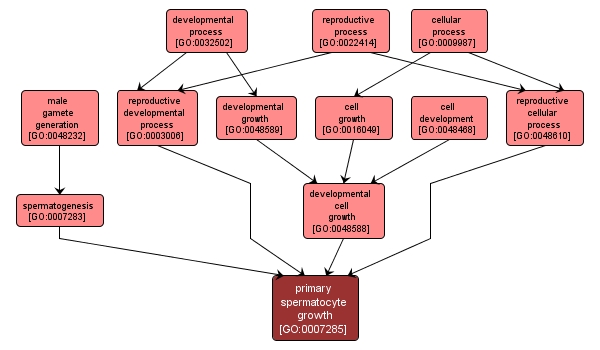GO TERM SUMMARY
|
| Name: |
primary spermatocyte growth |
| Acc: |
GO:0007285 |
| Aspect: |
Biological Process |
| Desc: |
The phase of growth and gene expression that male germ cells undergo as they enter the spermatocyte stage. The cells grow in volume and transcribe most of the gene products needed for the morphological events that follow meiosis. |
|

|
INTERACTIVE GO GRAPH
|














